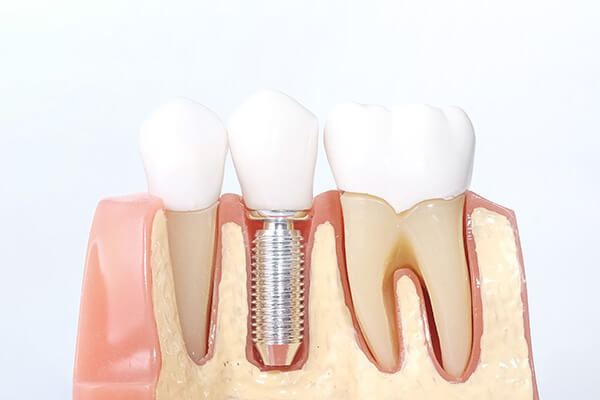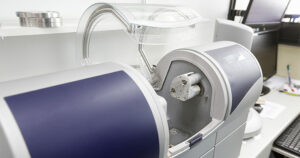How Is a Crown Attached to an Implant?

Thinking about dental implants but don’t know much about them? We commonly hear this from patients and would like to take a moment to educate you about the topic.
So you might understand that CEREC crowns and implants are a permanent solution, but you may wonder how they get the crown to remain in place.
Read on to discover the answer.
Understanding the Composition of a Dental Implant
Our dentist will first place the screw or post, consisting of titanium or zirconium oxide, which we embed into the jaw.
We then place an abutment — the structure that supports the artificial tooth, on the post. We can also situate a bridge on the implants.
You choose the prosthetic or artificial tooth material, such as porcelain or zirconia, for the crown.
Nowadays, we may use a process known as Chairside Economical Restoration of Esthetic Ceramic (CEREC).
This process is often referred to as a same-day crown since the process alleviates the wait and dentists create the restoration instantly in the office without the need to send it to a lab.
For CEREC, our dentist will take imaging of your mouth via the CEREC scanner. Then, using 3D-imaging software, the machine will produce a model of your teeth. Finally, the CEREC machine will mill your crown(s).
Before CEREC crowns and implants, you received a temporary crown that the dentist cemented in place using a soft cement that allowed them to remove it to place the permanent crown. However, this step isn’t necessary with CEREC crowns.
Adhering the Crown to the Implant
As noted, the crown is the part of the tooth visible when you smile or open your mouth. Our dentist will use one of two ways to adhere it to the implant.
Cemented Dental Crowns
Our dentist may attach the crown using dental-grade cement. While it’s a long-term solution, you may need to have the crown recemented in the future because it isn’t as strong as connecting it with a screw.
Cemented dental crowns aren’t easy to repair. Often, when we perform the repair, one of our dentists, of no fault of theirs, will damage the crown in the process and need to replace it entirely.
Screw-Retained Dental Crown
This option is a direct connection between the crown and the implant. With these, the tooth replacement has an opening on its underside. Our dentist will screw it onto the abutment through this space.
Ultimately, this is a lasting option and is easy to repair since it merely unscrews. It also requires less restorative space than a cemented dental crown.
Plus, when you use this method, it eliminates the possibility of cement sepsis — an infection caused by the dental cement.
So the implant still appears natural and the screw doesn’t show through, we place the implant toward the back of the tooth, making screw-retained dental crowns an option for any of your teeth, anterior or posterior.
We should note that you can expect to pay slightly more for this method than with cemented dental crowns.
When you opt for CEREC crowns and implants, you have the option of either cementing or screwing the restoration in place. Our dentist will help you decide the best option for your needs and desires.
- Call us at: 609-641-1462
- Email us at: drgoodrose@yahoo.com
We’re located in Pleasantville, NJ, and fortunately, that makes us conveniently located for prospective patients in Atlantic City, Ventnor City, Atlantic City, Somers Point, Millville, Hammonton, Ocean City, and Brigantine.

